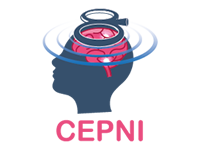Julian Reyes-López, Josefina Ricardo-Garcell, Gabriela Armas-Castañeda, María García-Anaya, Arango-De Montis, Jorge J González-Olvera, Francisco Pellicer
Objective:
Current treatment of borderline personality disorder (BPD) consists of psychotherapy and pharmacological interventions. However, the use of repetitive transcranial magnetic stimulation (rTMS) could be beneficial to improve some BPD symptoms. The objective of this study was to evaluate clinical improvement in patients with BPD after application of rTMS over the right or left dorsolateral prefrontal cortex (DLPFC).
Method:
Twenty-nine patients with BPD from the National Institute of Psychiatry, Mexico, were randomized in two groups to receive 15 sessions of rTMS applied over the right (1 Hz, n=15) or left (5 Hz, n=14) DLPFC. Improvement was measured by the Clinical Global Impression Scale for BPD (CGI-BPD), Borderline Evaluation of Severity Over Time (BEST), Beck Depression Inventory (BDI), Hamilton Anxiety Rating Scale (HAM-A), and Barratt Impulsiveness Scale (BIS).
Results:
Intragroup comparison showed significant (p < 0.05) reductions in every psychopathologic domain of the CGI-BPD and in the total scores of all scales in both groups.
Conclusions:
Both protocols produced global improvement in severity and symptoms of BPD, particularly in impulsiveness, affective instability, and anger. Further studies are warranted to explore the therapeutic effect of rTMS in BPD.
Clinical trial registration:
NCT02273674.
